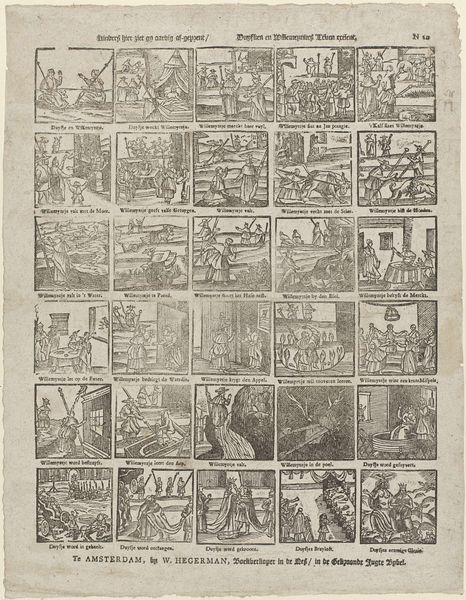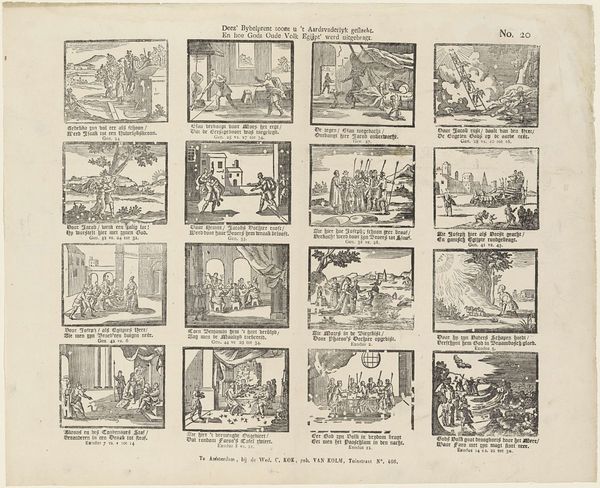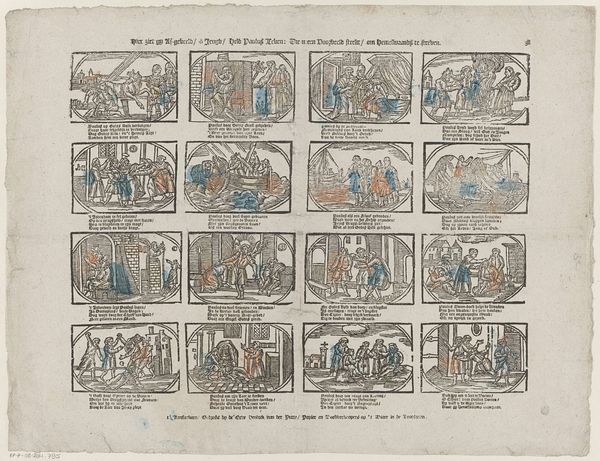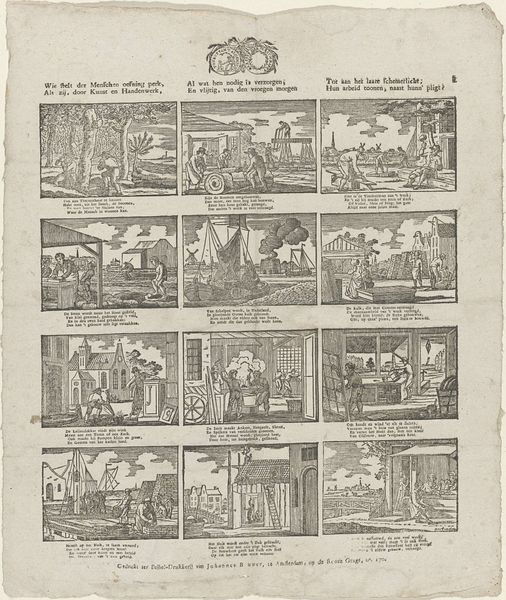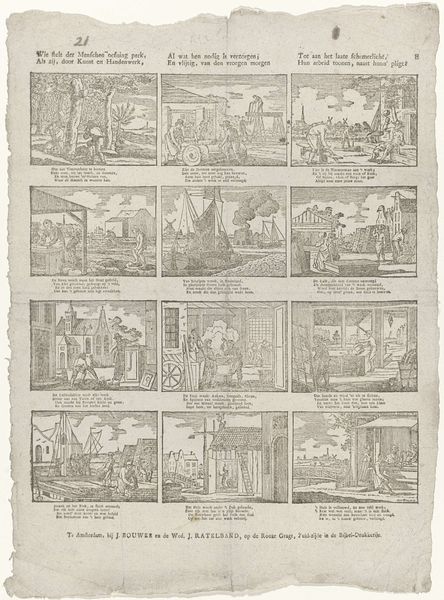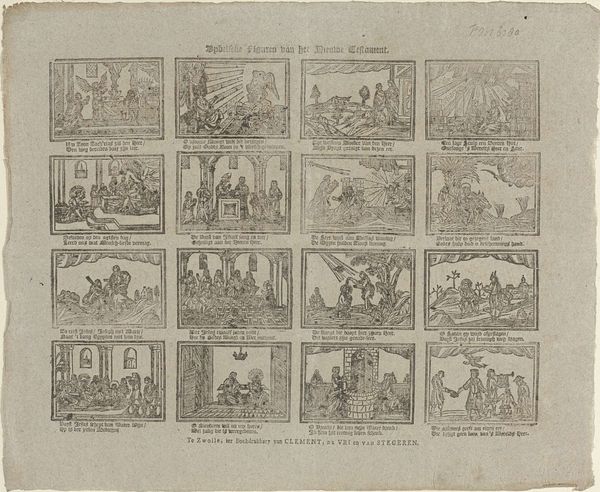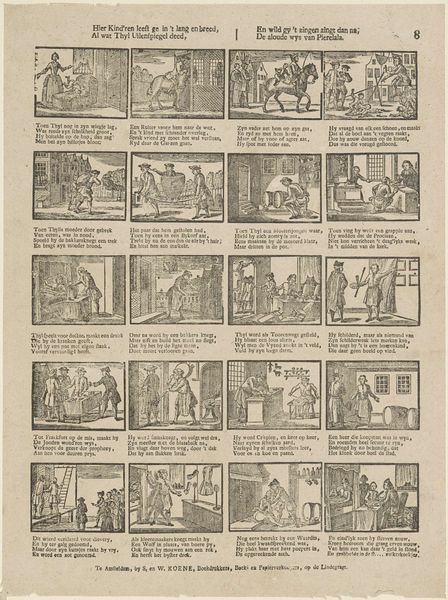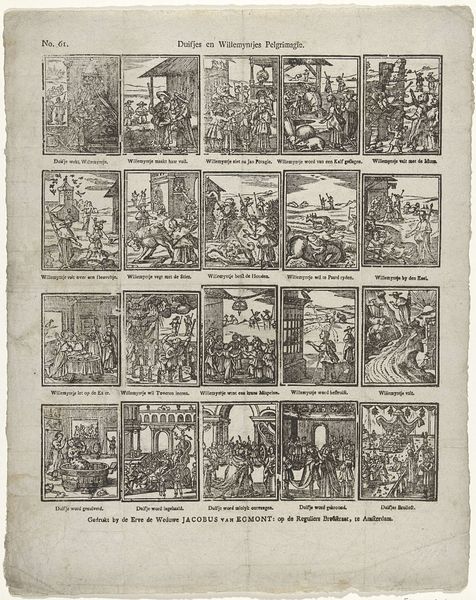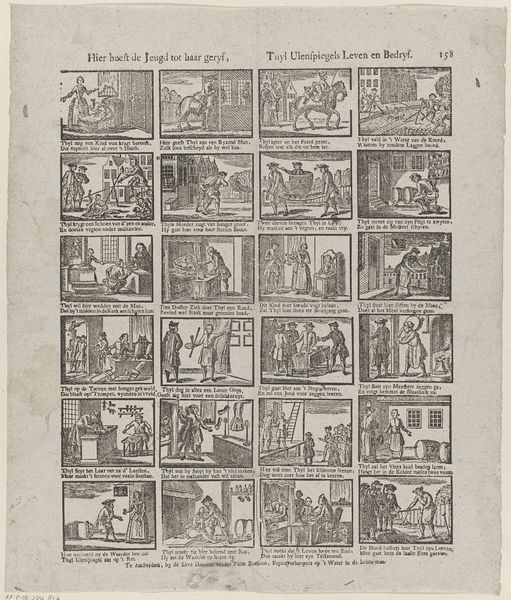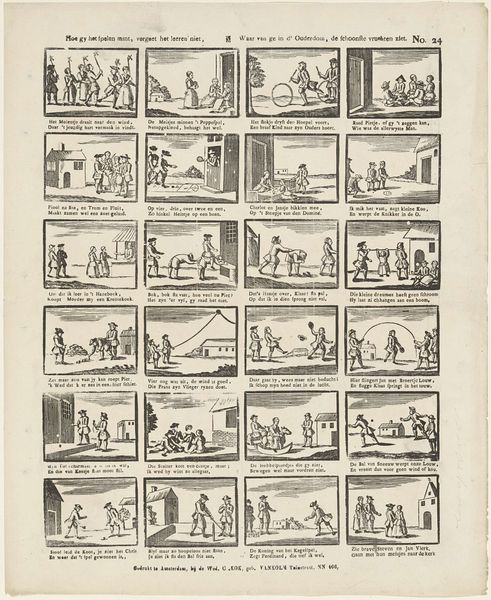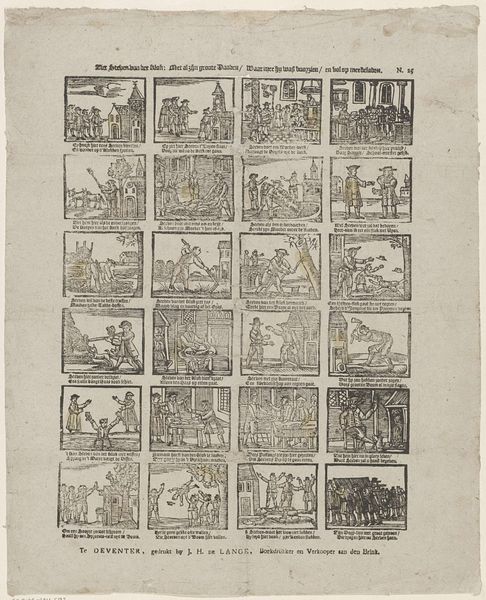
print, etching, engraving
#
narrative-art
#
dutch-golden-age
# print
#
etching
#
comic
#
genre-painting
#
engraving
Dimensions: height 305 mm, width 410 mm
Copyright: Rijks Museum: Open Domain
Curator: Pieter Koumans' print, "Veel vermakelyke weereld-wyze en zinryke spreuken," likely produced between 1722 and 1768, presents us with a series of miniature scenes etched onto paper. The overall composition feels very ordered but also quite dense with information. What stands out to you? Editor: It's the sheer number of these little narratives, all packed together, that really grabs my attention. And it seems very connected with craft as a way of both teaching and making art more widely available. How might the materials and method of production—the etching and engraving—relate to the artwork’s meaning, beyond just the narratives in each panel? Curator: Exactly! These aren't unique paintings destined for a wealthy patron’s wall. Instead, we have a print, something reproducible and accessible. Consider the labor involved. Etching requires skilled artisans, yes, but it also allows for a multiplication of imagery. Think about where these prints might have been displayed: perhaps in workshops, coffee houses, or even pasted on walls, bringing moralizing messages to a broader public. What impact would that have, shifting art from the elite to a wider social context? Editor: So the choice of printmaking is less about artistic expression, maybe, and more about distributing these sayings and images efficiently? The very nature of the medium democratizes the message? Curator: Precisely. It connects the making to the consuming. Who was buying these prints, and what did they do with them? Were they educating children? Debating the proverbs in taverns? The materiality opens up these questions about how knowledge and values circulated in 18th-century Dutch society. It’s no longer just about Koumans' individual artistry, but also the social life of his art. What is this etching stock? How did it degrade over time? Who was it trying to impact? Editor: That's a great point. Thinking about it as a material object that had a function in society gives me a totally new way to approach it. I see so many things to investigate now about its reception and what it shows about Dutch culture! Curator: Yes, it brings us to a greater appreciation not just for *what* the images are but *how* and *why* they came to be made and viewed that way.
Comments
No comments
Be the first to comment and join the conversation on the ultimate creative platform.
